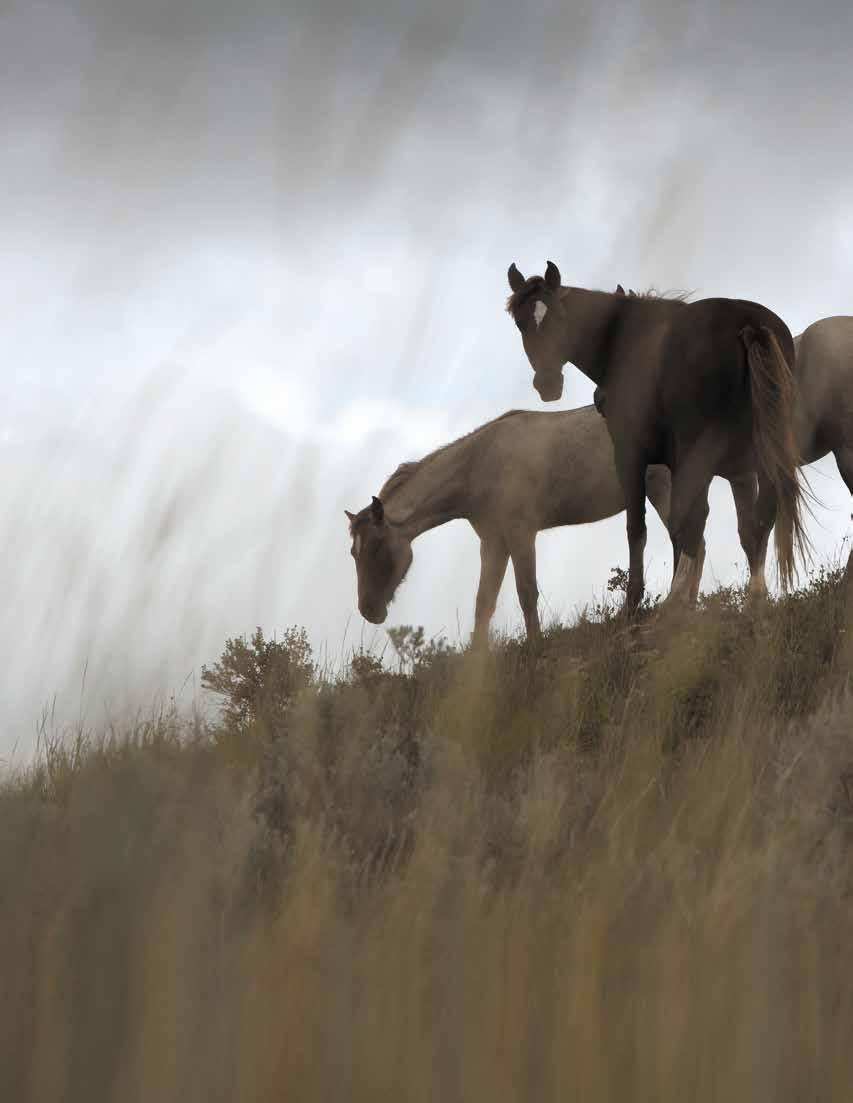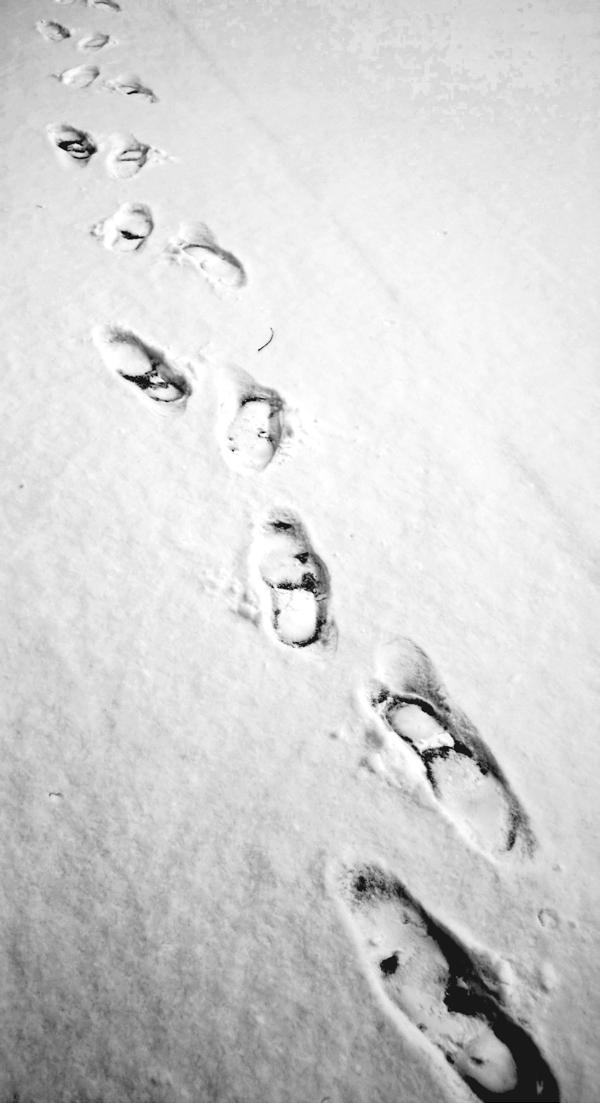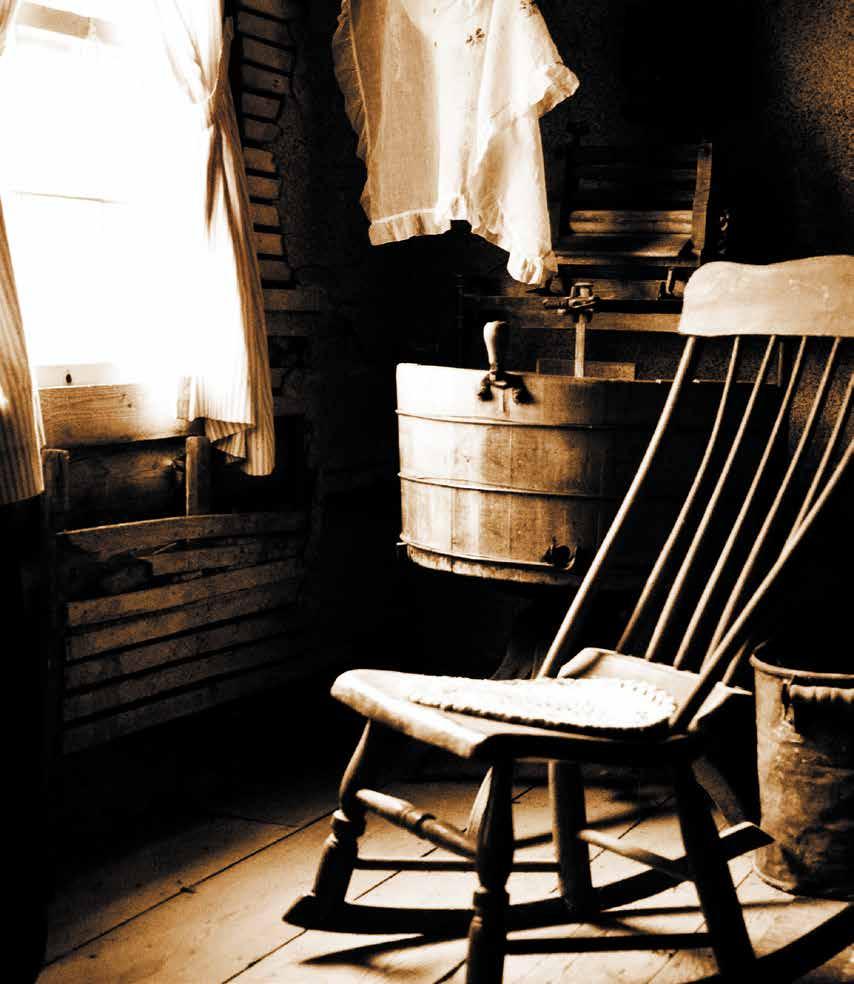
9 minute read
The Land, or the Landscape?
By Corey Seymour
Corey Seymour graduated from high school in New Rockford, ND, and studied literature at Georgetown University. He’s since worked in New York City as a writer and editor for various magazines including Rolling Stone, Men’s Vogue, and Men’s Journal, where he currently serves as articles editor. Seymour is also the co-author, with Rolling Stone founder Jann Wenner, of Gonzo: The Life of Hunter S. Thompson.
Advertisement
One spring day at the beginning of our junior-high biology class at New Rockford Central, our teacher announced an impromptu field trip. We marched the few blocks down to the James River and the adjacent city park, then received our marching orders: Measure off a one-foot by one-foot square of ground, then spend a full hour examining it with as much precision as we could muster. At first it seemed like a joke—this lawn we were to dissect was merely the carpeting beneath our feet as we barbequed, played volleyball, watched fireworks on July 4; it was land to be trampled over and ignored as we headed to the pool, the tennis courts, the river.
Our somewhat shocking discovery, of course, was that each plot was wildly different and harbored a self-contained world in miniature: Some teemed with strange organisms which, when literally put under the microscope, looked like space aliens; other patches, seemingly thriving from a bird’s-eye point of view (the bird, in this case, being us), were revealed, on close inspection, to be knock-knock-knockin’ on heaven’s—or at least Mother Nature’s—door, filled with rotting roots and the desiccated shells of long-gone insects.
Instantly, pride-of-place battles sprung up among our class: One person’s square foot was better than the others because it had more plant varieties; another’s because it contained a centipede or a large beetle which, in the shift of perspective and scale, became the T. Rex of our Lilliputian world. Then we packed up our microscopes and magnifying glasses and trowels and walked back to school.
A decade or so later I was living in the East Village of downtown Manhattan, eking out a spare existence as an editorial assistant at Rolling Stone. Our offices were twenty stories above the shopping spectacle of Fifth Avenue and looked out upon Central Park, a square mile of green in the middle of the asphalt, concrete, glass and steel city. During lunchtimes and on weekends, Central Park was now my plot to explore; in the intervening evenings I acquainted myself with a concrete-and-steel, whiskey-and-soda, straight-no-chaser part of the city about equal in size. And while I wouldn’t classify what I was doing as hard science, per se, there was a certain quality of anthropology to my meanderings.
I met a great number of people for whom a living, breathing representation of North Dakota was only now standing in front of them for the first time—in most of these cases, this was the only time in their lives the words “North” and “Dakota” were ever uttered together in their presence. What these people all wanted to know about my home plot, though, was exactly the same: Essentially, “Whatcha got?” They’d even run down the list of possibilities for me: “Mount Rushmore, right? No? The Black Hills?” Uh, no. “That big biker rally—where is it. . . Sturgis, North Dakota, right! Finally, desperate to lob me an alley-oop pass (though the game had long been decided), “Mountains? You must have some mountains.” Thwarted by the dearth of natural spectacles, they’d make a tactical retreat, looking for beetles and centipedes: “Well, who’s from North Dakota?” I tried, reader, I tried—but whatever increasingly animated combination of Peggy Lee, Eric Sevareid, Lawrence Welk and Phil Jackson that I could summon just didn’t seem to cut enough mustard. By this point, my audience was deflating in front of my eyes.
I’ve now lived in New York City for 20 years—one year longer than the time I spent growing up in North Dakota. The realization of this scale-tipping earlier this year filled me with a profound unease. I finally gave in a few years ago and got myself a New York state driver’s license, though if I had my druthers there would be an asterisk on it somewhere stating: “Still considers himself citizen of North Dakota.” Call it a holdover from my biology class, but I still hold fast to the notion that a life which allows you to walk on or, even better, dig in dirt occasionally is intrinsically better than one which doesn’t. The idea of identifying primarily with a place in which you haven’t lived for a couple decades, though, is an odd one.
The prevailing concept is that tenure on the land is the true measure of devotion to it. But what to make of two friends of mine, sisters from a farm family of several generations, who as we were about to graduate high school in the mid-1980s had yet to travel outside our medium-sized county? Should we call lack this of opportunity or curiosity, or just loving the one you’re with? I’d vote for a scoop of each, and would only add that these friends were among the most pleasant, intelligent, loyal and, at the risk of sounding redundant, grounded people I knew. As our country’s collective notions of individual patriotism continue to be labeled, exploited, divided and attacked, though, it’s only a small stretch to envision the sisters being vilified as isolationists—patriots to their county, but infidels to the state. Then again, thankfully, vilification has never been a growth industry in North Dakota.
The so-called American Dream, articulated fully, is wrought with contradictions. Two conflicting tautologies form the twin poles of our ethos: One says to always be yourself; the other that you can be whatever you want to be. Extrapolated to social and physical spaces, are we then to both love our country, our state, our counties, towns, schools, homes, families and friends as they are, while also striving to transform them, improve them, change them and challenge them? Is being rooted in a place the same as being satisfied with it? With being smug about it, competitive? Resigned to it, or merely comfortable?
If stay-put-ness was the end-all-be-all of being true to your geographical school, though, what then to say of our ancestors, each one of who, at some decisive moment, uprooted themselves from the place they called home to make a new one elsewhere?
Unless we were all borne of long lines of doomsayers, it’s fair to assume they each thought they were bettering themselves and their family fortunes. The modern version of this legacy of somebody-done-someplace-wrong has been rebranded as “brain drain”; the old-fashioned version was known variously as lighting out for the territories, seeking one’s fortune, Going West Young Man, or, in modern parlance, trying to better yourself.
In my first year in New York, I was surprised to learn from a Rolling Stone colleague that her grandfather hailed from North Dakota. He’d made his way from the Old World to New York with a plan to work his way across the country one job at a time: When he had money, he traveled; when he had none, he got a job and planted himself for a few years. I’ve often wondered what in God’s name compelled him to stop where he did: Was North Dakota better than any vaguely formed dream of California or Oregon or wherever he’d originally planned, or did he just get worn out, or perhaps simply took a shine to the landscape, or the people? Did he enjoy the weather, or did he put the “settle” in “settler”?
I left North Dakota and headed the other direction for one ill-defined reason: Because the sons of some family friends had gone East to college and come back to their farm on breaks having become more interesting people. In my more fatuous moments, I sometimes wish I wasn’t the sort of person who sought out “interesting experiences.” The problem, of course, is that you may find more of them than you wished. Listening to someone complain about this, though, is the been-there, done-that version of having a billionaire tell you that money isn’t everything. It’s absurd.
Almost as absurd is the experience of returning to my hometown now, as I’ve been doing lately for as long as I can as often as possible, despite having no family still living there. (The town is both small and intimate enough that people I haven’t seen in a decade or so stop me in the store or on the street and ask, with both suspicion and good cheer, what I’m doing there.) Returning to a favorite place isn’t the same as living there. It’s an ecstatic distillation of memory amidst the rediscovery of people and places that resonate in my memory: My mother’s best friend from childhood; the rough patch of land on the outskirts of town that my best friend Jim and I “discovered” and named ourselves (“The Found”); the railroad depot that sat a few hundred yards outside my bedroom window to where, at the sound of a distant whistle, I’d sprint to watch passing trains roll through (the building has been long gone and, I’d assumed, demolished; on a drive through the countryside during my most recent visit, though, I was startled to find it relocated to a game farm with deer, elk, antelope and a few bears); and, of course, the house I grew up in, ground zero of one’s sense of place.
The distinction between “house” and “home” in this case is somewhat akin to that between “landscape” and “land.” Settlers didn’t spend long days working the landscape. Like a house, it’s something you take in from an outside perspective. You can render judgments about its suitability for this or that, its being pleasing or not to the eye. I’m half a tourist now when I return, so I’ll have to call what I gaze out at through the window on trips back to North Dakota a familiar landscape. It’s still much the same as when I simply called it “land,” though my house—my former home—has fallen into disrepair. Aside from a deeply impractical wish to buy the place back just to fix it up, though, it evokes more feeling in me now than it ever did.
What we’re really looking for upon returning somewhere we once knew well is a place that we still remember in its shapes and contours, its signposts, clouds, snowstorms, temperatures and smells, and a person or two who remembers us—though not because of feats of derring-do, or idiocy, or grace, or good humor. I think it’s about proving something elemental to ourselves: We existed then, and still do so now. Psychologists say that one of the fundamental needs of our psyche is a narrative that we can use to explain the events of our days and our years to ourselves in a manner that makes sense. This narrative is: I was here once. This used to be my plot of land. And if I can’t be rooted in it, I’ll settle for being rooted to it.










